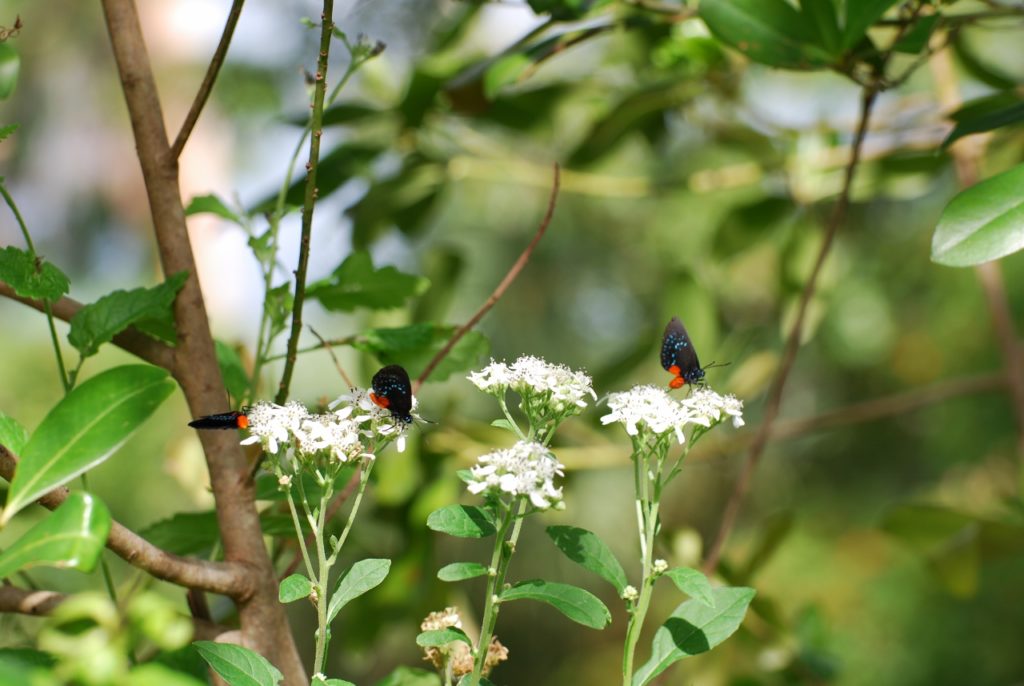
White Crownbeard
Verbesina virginica
The six foot tall, winged stalks and up to 10 inch long, deeply lobed leaves give White Crownbeard a bit of a rank appearance. It is during the late summer when heads of butterfly attracting white flowers appear that the value of this plant is realized.
Bees, butterflies and other pollinators visit the flowers. If you allow this plant to go to seed, even though the seed is small, it provides food for painted buntings and other seed eating birds.
After the seeds have all fallen, cut the plants back to the ground. New growth will be dense and attractive. Drought tolerance and the ability to out compete most weeds makes this an interesting background plant.
This is also called Frostweed and is found throughout Florida along canals or the edge of salt marshes in dense colonies. Due to the abundance of seedlings and root suckers that sprout around the plant, this is not recommended for small gardens.
Mass along a lake edge with Elderberry, Salt Bush, or Wax Myrtle. Place within an open area of forest or along a roadway. It can be used as a backdrop along the northern border of a garden. Frostweed may get large numbers of black aphids on the new growth. These are food for predatory insects and do no harm to the plant.
Up north Frostweed exudes sap at the base during a frost which then freezes into the shape of petals or curls. This is why they call it Frostweed. This, of course does not happen in South Florida.
If you have a planting of Coontie and Atala butterflies (which lay their eggs on it) then you may see dozens of these beautiful butterflies visiting the flowers of Crownbeard. These are the butterflies in the picture above.
For more info, click here.